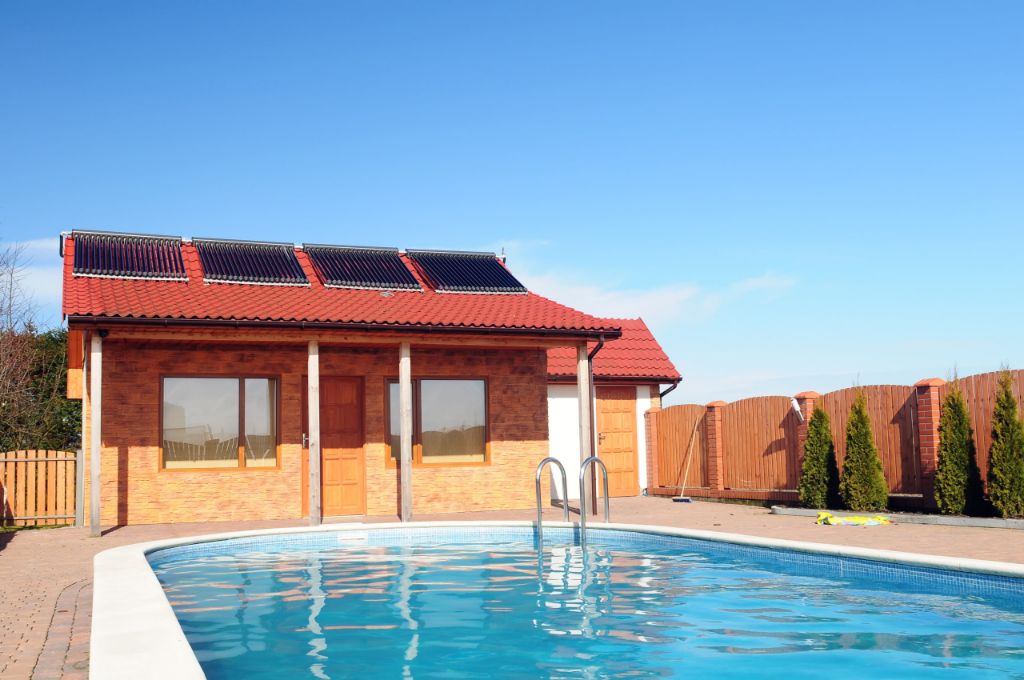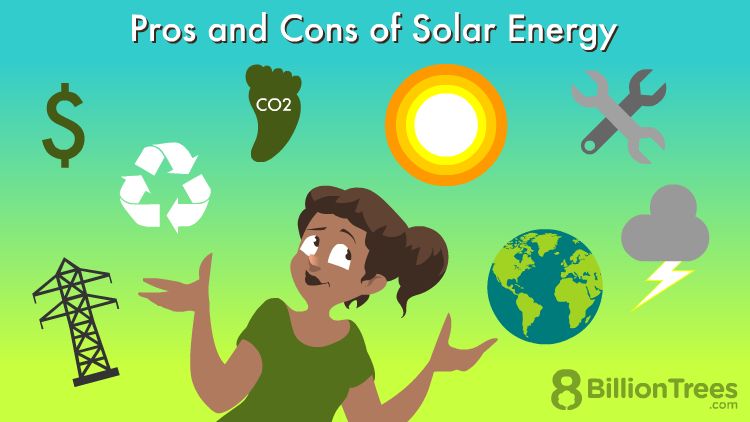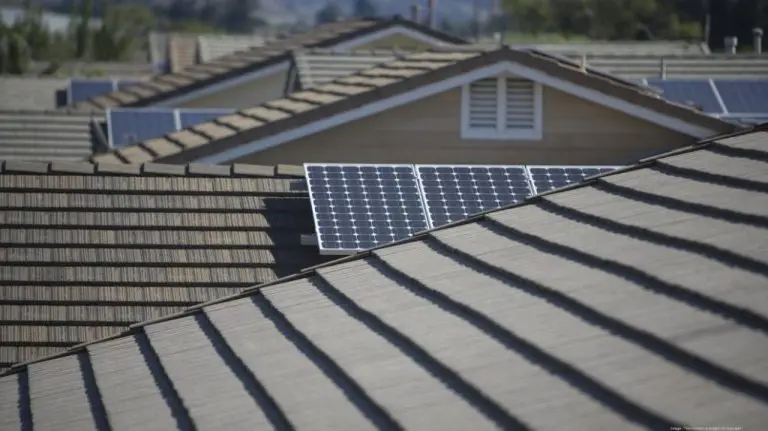How Long Does It Take For A Solar Heater To Heat A Pool?
Solar pool heating is a popular and cost-effective way to extend the swimming season and reduce pool heating costs. Solar heaters use solar thermal collectors installed alongside the pool to absorb heat from the sun and transfer it to the pool water (Solar Pool Supply). As an eco-friendly and renewable way to harness the sun’s energy, solar pool heating has surged in popularity in recent years.
The key factors that determine how quickly a solar heater can heat a pool include the climate, weather, pool size, solar collector size, and desired temperature. While solar heaters rely on sunshine, variations in these factors mean heating times can range from just a few days to several weeks to reach desired temperatures (Uma Solar). This article will provide an in-depth look at how long solar pool heaters take to heat pools under different circumstances.
How Solar Pool Heaters Work
Solar pool heaters use solar collectors to capture heat from the sun and transfer it to the pool water. The solar collectors consist of panels made of plastic or metal with small channels or tubes running through them. These panels absorb the sun’s thermal energy and heat the water as it passes through the tubes [1].
The pool’s filter pump is used to circulate water through the solar collectors and back into the pool. As the water flows through the heated collector tubes, it warms up from the solar thermal energy. The warmed water then returns to the pool, transferring the captured heat energy and raising the overall pool temperature [2]. This cycle repeats continually on sunny days to maintain the heated temperature.
The solar collectors are mounted on the roof or on the ground in a sunny location. The system works best when the panels are angled toward the mid-day sun to maximize sunlight exposure. Solar pool heating is a simple, eco-friendly way to harness the sun’s energy for a warmer pool.
Factors That Impact Heating Time
There are several key factors that impact how long it takes for a solar heater to heat a pool, including climate and weather, the size of the pool, and the efficiency of the solar collectors.
Climate and weather play a huge role. Solar pool heating systems work by harnessing energy from sunlight to heat pool water as it passes through solar collectors. Naturally, the amount of sun exposure impacts performance. Areas like Florida and California with abundant sunshine can expect faster heating from their solar pool heater compared to cloudier regions. Time of year matters too. Solar heaters operate more efficiently during summer vs. winter when the sun’s rays are weaker.
Larger pools require more energy to heat up. So the size of your pool also affects heating time. For example, an average 16′ x 32′ inground pool holds approximately 19,000 gallons. That would take longer to heat than a 12′ x 24′ above ground pool with about 10,000 gallons.
Finally, collector efficiency makes a difference. More efficient collectors have greater surface area to absorb and transfer heat. Using modern efficient collectors enables your solar pool heating system to operate at maximum capacity. Older or poorly functioning collectors will be less effective.
Average Timeframes
The time it takes for a solar heater to heat a pool depends heavily on the climate and season. In general:
In warm climates like Florida and Southern California, a solar heater can typically heat a pool within 1-3 days during peak summer conditions. According to Celestial Solar, it may take 8-24 hours to heat a 15,000-20,000 gallon pool 10°F in these climates during summer. However, it may take 48 hours or more during cooler or cloudier periods (source).
In cooler climates, solar heaters take longer, especially in spring and fall. It could take 3-7 days to adequately heat a pool during these shoulder seasons. In winter, solar heaters still provide some heat, but won’t be able to fully heat a pool on their own (source).
Several factors impact average timeframes. Larger pools take longer to heat. In-ground pools retain heat better than above-ground. And the pool’s starting temperature, the size of the solar heater system, and weather conditions all impact heating duration.
Maximizing Efficiency
There are a few key factors that impact how efficiently your solar pool heater collects heat from the sun:

Collector Types
The type of solar collector you use makes a difference. Unglazed mat collectors made of synthetic rubber absorb less heat than glazed collectors with copper pipes, but are also cheaper. Glazed collectors with copper pipes absorb the most heat.
Collector Setup
How you position the solar collectors matters as well. Laying them flat on an angled roof maximizes exposure to the sun’s rays. Tilting collectors on flat roofs helps angle them properly. Curving long rows of collectors can allow more overall exposure [1].
Maximizing Sunlight Exposure
Exposure to direct sunlight significantly impacts heating capability. Removing shade from trees or structures can help. So can optimally orienting collectors to face south (in the northern hemisphere). Using a larger collector area and insulating covers like plastic sheeting further aid heat retention [2].
Supplementary Heating Options
While solar heating is a great eco-friendly option, it may not be able to fully heat a pool on its own during colder months or extended cloudy periods. In these cases, pool owners often use a hybrid heating system that combines solar with a conventional pool heater like gas or electric heat pumps for supplementary heating (https://sunloverheating.com.au/adding-a-heat-pump-or-gas-heater-to-your-swimming-pool-solar-heating/).
Hybrid solar systems allow the solar heater to harness the sun’s energy whenever possible, while the conventional heater acts as a backup to reach and maintain the desired water temperature. This maximizes savings compared to using the conventional heater alone. The solar heating should be installed to heat the water first before it flows into the conventional heater for supplemental heating as needed (https://floridasolardesigngroup.com/solar-pool-heater-plumbing-gas-electric-heaters/).
Gas heaters provide an affordable backup heating option. Heat pumps offer greater energy efficiency than gas, albeit at a higher upfront cost. Pool owners can choose the right conventional heater to pair with solar based on their budget and needs. With smart controls, the conventional heater only activates to provide auxiliary heating when the solar panels cannot sufficiently heat the pool on their own.
Installation and Maintenance
Proper installation and ongoing maintenance are key to getting the most out of a solar pool heater. Hiring a qualified solar contractor is highly recommended, as they will have the expertise to handle permitting, code compliance, system sizing and positioning, and integration with your existing pool equipment. DIY installation is possible but can be tricky and may void warranties if not done to manufacturer specifications.
Regardless of whether you use a contractor or DIY, be sure to follow the manufacturer’s maintenance guidelines. Basic maintenance tips include:1
- Inspect panels and plumbing for leaks, cracks, and blockages.
- Clean panels regularly to remove dirt and debris.
- Check collector loop pH and chemistry.
- Replace worn or damaged parts as needed.
- Have a professional service the system annually.
With proper installation and regular maintenance, a solar pool heating system can provide years of energy-efficient heating.
Costs
The average cost to install a solar pool heating system is $2,500 to $6,500, according to HomeGuide (exact source). This includes $2,000 to $5,000 for the solar panels and other equipment, plus $500 to $1,500 for labor and installation.
According to PoolGnome (exact source), the national average cost for a solar pool heating system is around $5,085. Prices can range from $2,835 for a small system up to $7,335 or more for a large custom system.
The return on investment for a solar pool heating system is usually 3 to 5 years. This is much faster than a gas heater which can take 7 to 10 years to recoup the costs. Solar heating has lower operating costs since there is no gas required.
Compared to gas heaters that cost $3,000 to $5,500 installed, solar heating is competitive. Though the upfront cost may be higher, the free energy from the sun saves money over time.
Going Green
Solar pool heating is an eco-friendly, renewable way to heat your pool that helps reduce your carbon footprint. According to Solar Industries, replacing a traditional fossil fuel pool heater with a solar heater can eliminate up to 10 tons of carbon dioxide emissions per year. Solar pool heaters operate without burning any gas or propane, so they produce no greenhouse gas emissions or harmful byproducts during operation.
Solar Industries points out that “Replacing your swimming pool’s fossil fuel based heater with a solar heater can eliminate as much as 10 tons of carbon dioxide emissions, combining eco-friendly efficiency with significant cost savings over propane and natural gas heaters.”
The Benefits of Eco-Friendly Pool Heaters states that “Since a solar pool heater doesn’t burn gas or propane to run, it doesn’t produce harmful emissions. Some states like California actually have regulations in place to reduce the carbon footprint of pool heating.”
By using free and renewable solar energy, you can heat your pool in an environmentally responsible way. Solar pool heating systems have a minimal environmental impact compared to traditional pool heating methods. Going solar helps reduce your carbon footprint and is a green, clean way to heat your pool.
Conclusion
In summary, solar pool heaters provide an eco-friendly and effective way to heat swimming pools. The time it takes for a solar heater to warm a pool depends on several factors like climate, pool size, solar panel setup, and supplementary heating options. On average, solar heaters require 1-2 weeks to adequately heat a pool in favorable weather conditions. With ample sunlight and minimal heat loss, a solar heater can increase pool temperature up to 5-10°F per day.
Going forward, solar pool heating is likely to increase in popularity as sustainability becomes more important. Innovations like smart sensors and improved efficiency will make solar heaters even more effective and easier to install. With the right solar heating system and setup, pool owners can lower energy costs and reduce their environmental impact through harnessing the sun’s renewable energy.




